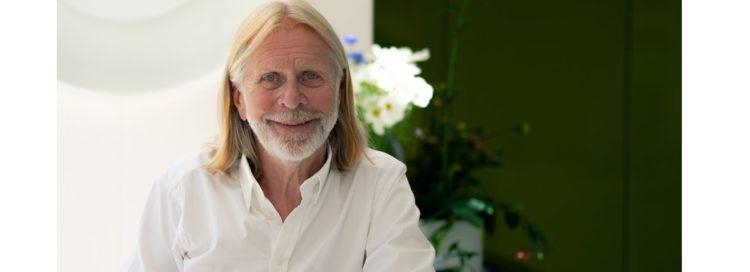Retirement planning services may not seem to have much in common with one of the UK’s biggest high street retailers.
But the Executive Marketing Director of online retirement advisor Chancery Lane, which launched last month, sees a clear thread from his time in Marks & Spencer’s top marketing job to his current role.
“What’s relevant is I spent those ten years marketing to better-off 55-year-olds,” explains Steve Sharp. “That’s precisely the market we’re talking about now.”
He argues that reaching this cohort requires departing from conventional wisdom, just as his time at M&S did.
“It’s a good job that I didn’t read the marketing manual, which said you can’t call it M&S. I said, why don’t we talk about it and give it back to the people?”
The resultant ‘Your M&S’ campaign looked to boost the visibility of the brand and build consumer confidence in it. Other memorable campaigns included the ‘It’s Not Just’ campaign, colloquially known as “food porn” adverts, as well as one featuring 60s icon Twiggy.
Steve defines these campaigns as combining “creativity and relevance” – qualities that he hopes to bring to his new role.
“Everyone has got their head in the numbers and has forgotten how important [creativity] is.”
After leaving M&S and creating the marketing agency Imagineer, Steve was introduced to Doug Brodie, Chancery Lane’s founder, and came on board as the firm’s marketing head in 2019.
The company’s team brings together specialists from a wide range of backgrounds, including the co-founder of robo-advisor Nutmeg and an IT consultant who formerly worked at the CERN Large Hadron Collider.
“Marketing is at the centre of these emerging businesses,” says Steve. “I don’t underestimate the complexity of the investment side of the business but it’s marketing that makes the difference.”
Although it’s early days for the firm, the marketing activities include traditional channels combined with up-to-the-minute start of the art digital advertising.
“When TV started there was one black and white channel,” Steve says “Now there are hundreds. This does lead to a fragmentation of the audience, but it also gives you the ability to target better because you can go on a documentary or arts channel.
“The same is true [with digital] but on a different scale. I’m after a very specific market: people between 55 and 65 with pensionable assets of over £250,000.”
“If I was selling lawnmowers – firstly you need a lawn if you want one – but there are millions of people who need them. But with a sit-on lawnmower it’s a bigger lawn and much fewer buyers.
“I’m looking for smaller numbers of very relevant people. So it’s a combination of traditional advertising in newspapers like the Sunday Times and consumer PR with state of the art online content, marketing, tracking, measuring, monitoring, analysis and algorithms. It helps me that I’m looking for such a specific audience.”
By baby boomers, for baby boomers
The firm proudly states on its site that it was created by baby boomers, for baby boomers. Steve says the marketing approach has to be informed by the historical uniqueness of this generational cohort, usually identified as being born between 1946 and 1964.
“[Boomers] grew up at a fundamentally different time. They are fundamentally different to the previous generation and those who have come since.”
He highlights the multiple changes experienced by this generation, across popular culture, fashion and politics. The vast social changes of the 1960s were followed by economic upheavals in the 1980s under Margaret Thatcher, with the advent of share ownership being particularly key.
“This is a group of people for whom life has never stopped being exciting and different. They now own £5 trillion of the country’s wealth and are interested in having the gap year they didn’t have before they’re too old.
“Marketing to them requires a touch that recognises who they are and what their tastes are. It’s not necessarily what one has seen in other fields and age groups.”
Steve emphasises the importance of his own intuition in marketing to members of this cohort – after all, “I am one”, he adds.
This means avoiding competitor benchmarking and an over-reliance on data, in favour of “intuition, flair and creativity”.
Chancery Lane’s content encompasses a range of topics, including at one end travel tips, and the other detailed information on how investment products work. The ‘Chancery Brain’ section on the company’s website includes short articles discussing various aspects of investing.
The content also takes a range of formats, whether podcasts, blogs or infographics.
At the heart of the campaigns is the focus on the core product. For example, while Steve argues that sustainability is a core value for many investors in this category, it is not at the centre of the campaign. He likens it to the coffee industry, which his son works in.
“He asked for advice around marketing for ethical coffee pods. I told him: don’t forget the coffee tasting great. Don’t forget the product you’re selling first. You’ve got to have great tasting coffee that has other benefits, not the other way around.
“It’s the same with us. In the end we are very carefully providing a regular income to people who have saved hard.”

